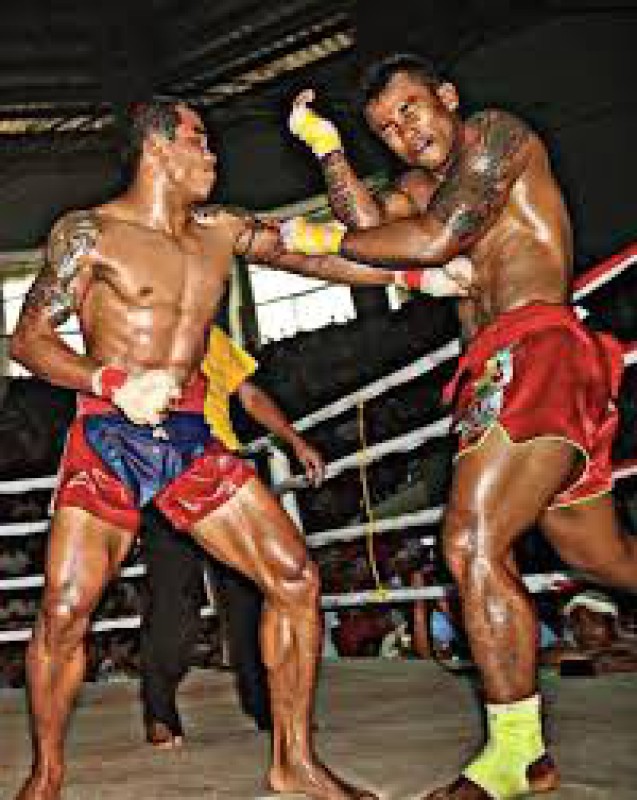Myanmar's Hidden Warriors: Unveiling the Ancient Arts of Bando and Lethwei

808

Hsu (NP News)
The Republic of the Union of Myanmar is home to two distinct and powerful martial arts: Bando and Lethwei. These disciplines are deeply woven into the nation’s history, reflecting centuries of cultural evolution, warfare, and spiritual beliefs. Bando, known for its fluid, animalistic movements and emphasis on self-defense, contrasts with the raw brutality of Lethwei, often called the "Art of Nine Limbs" due to its allowance of headbutts. Together, they offer a captivating glimpse into Myanmar’s martial traditions and heritage.
Historical Foundations
Bando’s origins date back to at least 1000 AD, influenced by warriors from India and China. Initially defensive, it evolved significantly with the Ayegyi warrior-monks of the First Burmese Empire (1057-1287 AD), who infused philosophical and religious elements into the art. British colonial rule (19th to mid-20th centuries) suppressed Bando, fearing it could incite resistance. However, the tradition endured, practiced in secrecy until Myanmar’s independence, when figures like Ba Than Gyi worked to restore and modernize it.
Lethwei, believed to have been developed by Burmese monks around the 3rd century AD, was historically integral to Myanmar’s military. In the 16th to 18th centuries, it became the empire’s national sport, and skilled boxers were honored as "Royal Boxers." Like Bando, Lethwei was banned under British rule but survived in rural areas, often disguised as dance or festival performances. After World War II, Olympian boxer Kyar Ba Nyein helped modernize Lethwei, laying the groundwork for its current resurgence.
Bando: The Way of the Animal
Bando emphasizes defense and discipline, incorporating movements inspired by animals such as the tiger, cobra, eagle, and monkey. Each form embodies strategic principles; for example, the bull style focuses on charging strikes, while the python form uses constrictive movements. Bando also includes weapon training, known as Banshay, featuring swords (dha), staffs (dhot), and spears. Training progresses from fundamental stances to offensive and defensive techniques, making Bando a holistic and multifaceted martial art.
Lethwei: The Art of Nine Limbs
Lethwei is known for its raw and intense combat style, allowing headbutts in addition to punches, kicks, elbows, and knees. Traditional Lethwei matches are fought bare-knuckle, with minimal hand wrapping for protection. Historically, victory was only achieved through knockout, and fighters had a unique "special time-out" rule, allowing a knocked-out competitor a two-minute recovery period. This aggressive and unrelenting nature sets Lethwei apart from other striking arts and contributes to its growing international appeal.
Notable Figures
Several individuals have played key roles in preserving and promoting these martial arts. Dr. Muang Gyi introduced Bando to the United States in the 1960s, founding the American Bando Association (ABA), while U Hla Win helped spread it in Europe. Ba Than Gyi’s post-independence efforts were crucial to Bando’s revival.
In Lethwei, Kyar Ba Nyein modernized the sport by introducing structured rules. More recently, Tun Tun Min became the youngest Golden Belt Openweight Champion, defending his title 18 times. Dave Leduc, a Canadian fighter, gained international recognition as the first non-Burmese Golden Belt champion, bringing global attention to Lethwei. Other notable fighters include Saw Nga Man, Lone Chaw, and Tway Ma Shaung.
Cultural and Social Significance
Bando is more than combat; it represents a "way of discipline" and embodies a philosophy of self-improvement. Historically used in warfare, it fosters national pride and is often displayed at festivals. The art’s holistic approach integrates mental and spiritual growth, emphasizing harmony and control.
Lethwei holds deep cultural roots as a rite of passage for young men, symbolizing strength and courage. Matches are central to festivals and religious ceremonies, reinforcing its place in Myanmar’s social fabric. For some, Lethwei provides a path to economic opportunity, as skilled fighters can gain national recognition and financial stability.
Rituals and Traditions
Bando incorporates historical rituals, with early animal dances evolving into combat movements. Its philosophy emphasizes defense, discouraging unnecessary aggression. The ABA’s symbol represents balance between self, society, and the universe, promoting harmony and discipline.
Lethwei’s traditions include the Lethwei Yay, a pre-fight dance showcasing skill and courage, and the Letkkha Moun, a three-clap challenge that signifies respect between fighters. Traditional Myanmar music, played by the Saing Waing orchestra, accompanies fights, enhancing the ceremonial atmosphere. Humility outside the ring and ferocity inside it are key tenets of Lethwei’s philosophy.
Modern Preservation Efforts
Bando continues to be practiced in Myanmar and has gained a following abroad, particularly in the U.S. and U.K. Organizations like the Myanmar Thaing Federation and the ABA work to preserve and promote it internationally.
Lethwei remains a dynamic sport in Myanmar, with training schools and competitions held nationwide. Events range from rural festival fights to professional matches in cities like Yangon and Mandalay. The Myanmar Traditional Lethwei Federation (MTLF) governs the sport, while organizations like the World Lethwei Championship (WLC) have helped bring it to a global audience, attracting international fighters and fans.
Global Interest and Tourism Potential
Bando and Lethwei offer unique appeal to martial arts enthusiasts worldwide. Bando’s animalistic movements provide a fresh perspective on traditional combat, while Lethwei’s extreme, bare-knuckle nature differentiates it from other striking sports. These arts not only draw attention to Myanmar’s martial heritage but also encourage international visitors to train in the country and experience live Lethwei matches, fostering cultural exchange and tourism.
Conclusion
Myanmar’s martial arts, Bando and Lethwei, encapsulate the nation’s history, discipline, and fighting spirit. From Bando’s animalistic grace to Lethwei’s brutal intensity, these arts remain integral to Myanmar’s cultural identity. As global interest grows, their preservation and promotion will not only sustain their legacy but also introduce the world to Myanmar’s rich martial heritage.
Reference:
• "Bando." Wikipedia, https://en.wikipedia.org/wiki/Bando.
• "Banshay." Wikipedia, https://en.wikipedia.org/wiki/Banshay.
• "Lethwei." Wikipedia, https://en.wikipedia.org/wiki/Lethwei.
• "World Lethwei Championship." Wikipedia, https://en.wikipedia.org/wiki/World_Lethwei_Championship.